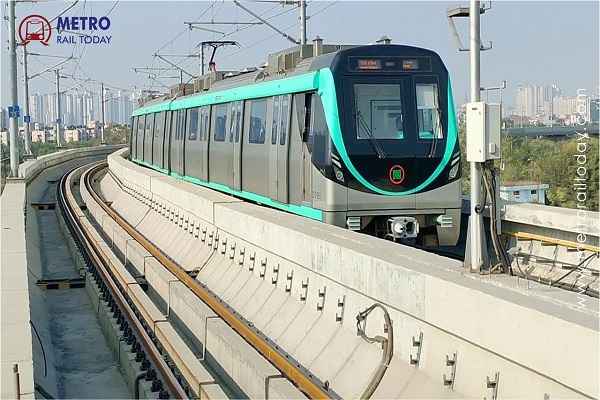 Ayesa India wins Design Consultancy Contract for Noida Metro Aqua Line Extension
Ayesa India wins Design Consultancy Contract for Noida Metro Aqua Line Extension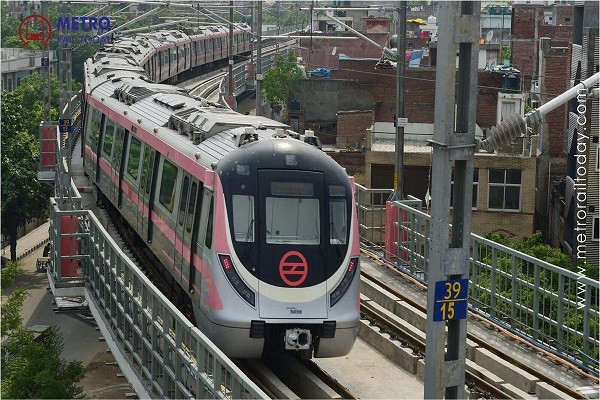 Vossloh Cogifer bags Track Infrastructure Contract for Delhi Metro Phase 4 Corridors
Vossloh Cogifer bags Track Infrastructure Contract for Delhi Metro Phase 4 Corridors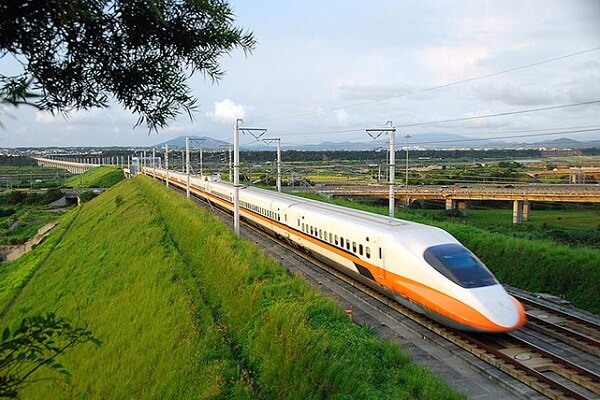 Railway finalised revised alignment for ₹16,000-crore Pune–Nashik Semi High-Speed Rail Corridor
Railway finalised revised alignment for ₹16,000-crore Pune–Nashik Semi High-Speed Rail Corridor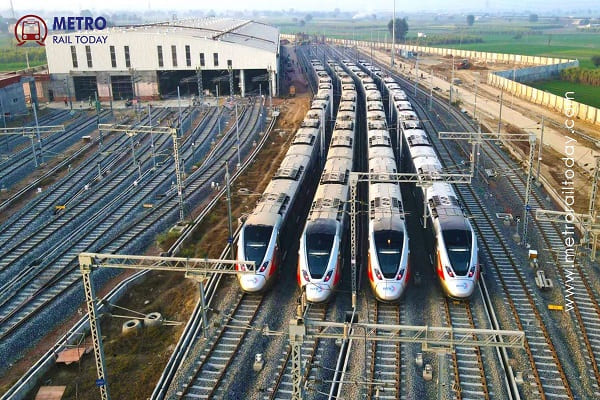 India’s First High-Speed, Signalling-Integrated CMV launched for Namo Bharat RRTS Corridor
India’s First High-Speed, Signalling-Integrated CMV launched for Namo Bharat RRTS Corridor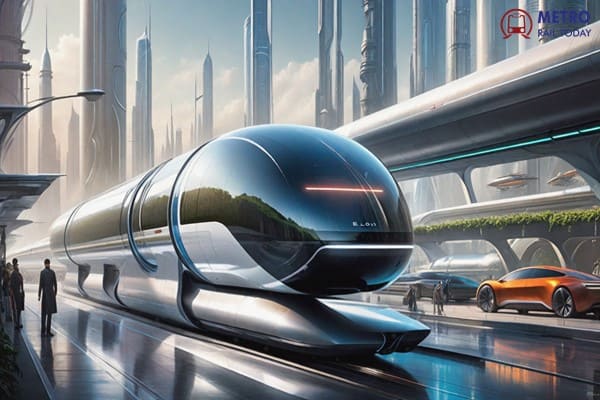 TuTr Hyperloop secures First-Ever Order from Deendayal Port Authority
TuTr Hyperloop secures First-Ever Order from Deendayal Port Authority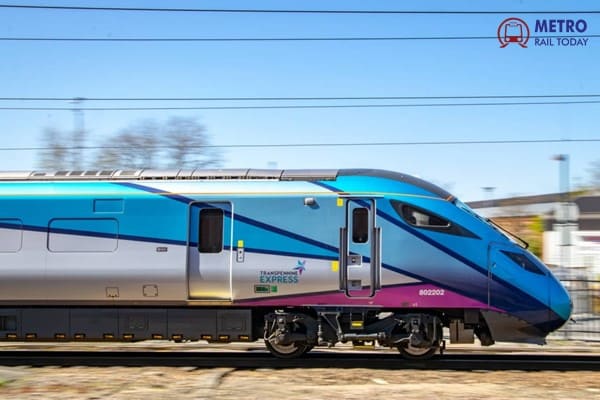 BEML bags ₹157 Crore Order from Loram Rail for Switch Rail Grinding Machines
BEML bags ₹157 Crore Order from Loram Rail for Switch Rail Grinding Machines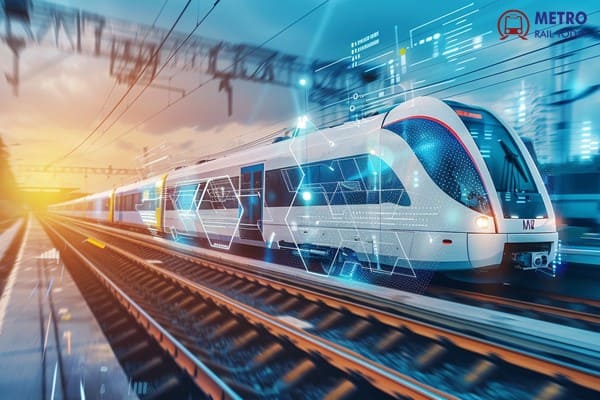 MxV Rail and KRRI forge Global Research Alliance to accelerate Next-Generation Rail Technologies
MxV Rail and KRRI forge Global Research Alliance to accelerate Next-Generation Rail Technologies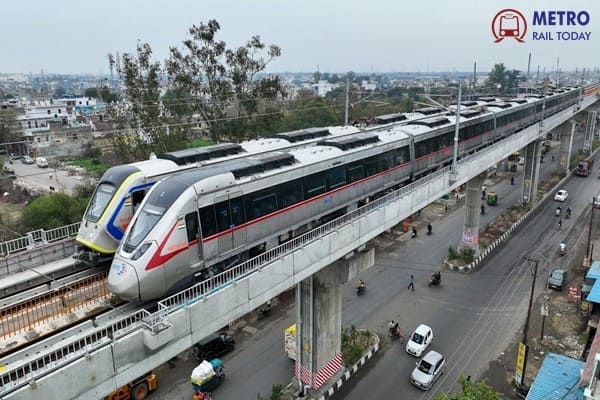 Uttarakhand seeks Pre-Feasibility Study for Meerut-Haridwar-Rishikesh RRTS Corridor
Uttarakhand seeks Pre-Feasibility Study for Meerut-Haridwar-Rishikesh RRTS Corridor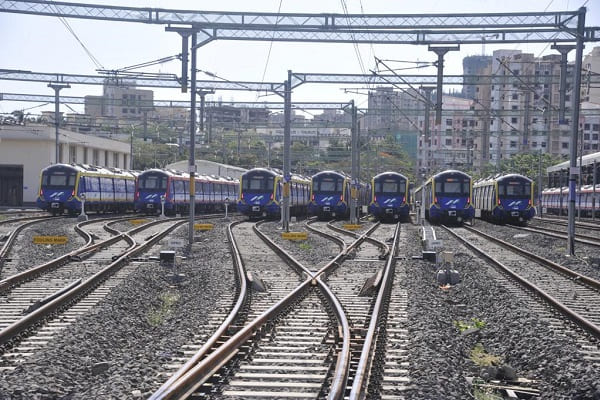 RIFTEK achieves major milestones in partnership with Indian Metro Rail Systems
RIFTEK achieves major milestones in partnership with Indian Metro Rail Systems Egypt all set to launch Alexandria Metro Phase 1 by 2026
Egypt all set to launch Alexandria Metro Phase 1 by 2026
Chennai Metro: Paving the Path for Modern Urban Transportation
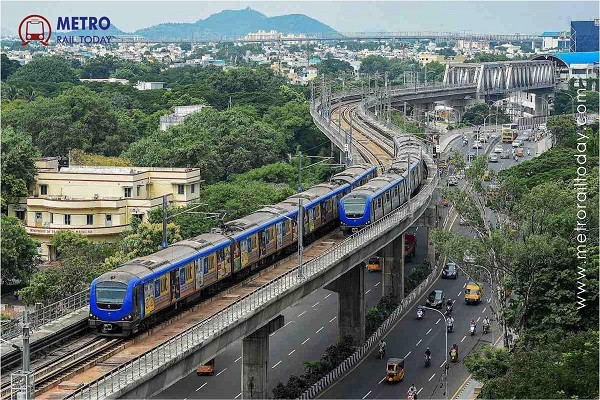
The Chennai Metro Rail, a symbol of progressive urban development, has emerged as a transformative force in the city's transportation landscape. With a commitment to providing efficient, sustainable, and comfortable public transit, the Chennai Metro has not only changed the way residents navigate the city but also set a benchmark for other urban centers to follow.
Inception and Evolution
The idea of a metro system for Chennai was conceived in the early 2000s as a response to the city's burgeoning population and growing traffic congestion. The Chennai Metro Rail Limited (CMRL) was established in 2007 to oversee the development of the metro network. Since its inception, the project has aimed to create a modern, efficient, and environmentally friendly mode of transportation.
As a modern Mass Rapid Transit System (MRTS), the project aimed to create a seamlessly integrated network that offered swift and efficient transit solutions. The project's first phase marked a significant milestone, with metro train operations commencing on June 29, 2015. The system covered a total of 54.61 kilometers across two lines.
Project Overview and Routes
The Chennai Metro Rail project was initiated to address the city's growing transportation needs and alleviate traffic congestion. The project's vision was to create a modern, efficient, and sustainable mode of public transit. The metro network consists of two operational lines: Blue Line and Green Line.
Blue Line: The Blue Line, stretching from Chennai International Airport to Washermanpet, connects key areas like Anna Salai, Thousand Lights, and Central Railway Station. This line spans approximately 25.3 kilometers, offering passengers a convenient and swift travel experience.
Green Line: The Green Line links Chennai Central to St. Thomas Mount, passing through vital hubs like Chennai Egmore and Koyambedu. Covering around 20.1 kilometers, this line enhances connectivity and accessibility for commuters.
Network Expansion
The Chennai Metro is designed to connect key areas within the city and improve connectivity. The network comprises two operational lines, Blue Line and Green Line, covering a total distance of over 45 kilometers. Each line serves as a vital artery, catering to the commuting needs of diverse sections of the population.
The Blue Line runs from Chennai International Airport to Washermanpet, passing through prominent locations like Anna Salai and Central Railway Station. On the other hand, the Green Line links Chennai Central with St. Thomas Mount, passing through pivotal hubs such as Chennai Egmore and Koyambedu.
The upcoming Pink Line is set to extend connectivity from Lighthouse to CMBT, further enhancing the metro network's reach and accessibility.
With a clear vision for expansion and enhancement, the Chennai Metro continues to evolve. By the ambitious target of 2027, the metro rail network is projected to span an extensive 188.82 kilometers, cementing its role as a cornerstone of Chennai's urban transportation infrastructure.
Features that Set Chennai Metro Apart
The Chennai Metro is characterized by several features that contribute to its success and popularity:
1. State-of-the-Art Stations: The metro stations are designed to provide passengers with a modern and comfortable experience. They are equipped with escalators, elevators, and spacious waiting areas. Additionally, the stations follow eco-friendly practices, incorporating rainwater harvesting systems and energy-efficient lighting.
2. Efficient Operation: The Chennai Metro operates with a high level of punctuality, ensuring that passengers can rely on the system for their daily commute. The automated fare collection system further streamlines the boarding process.
3. Sustainable Practices: The CMRL places a strong emphasis on sustainability. The metro system incorporates features like regenerative braking to reduce energy consumption and carbon emissions.
4. Integration with Other Modes: Chennai Metro has seamlessly integrated with other modes of transportation, facilitating easy transfers for passengers. This intermodal connectivity encourages more people to opt for public transit.
5. Swanky Interiors: Stepping inside a Chennai Metro station is like entering a realm of modernity. The stations boast swanky interiors, clean surroundings, and state-of-the-art facilities. The well-lit and air-conditioned platforms provide a respite from the city's hustle and bustle, making the travel experience comfortable and pleasant.
6. Squeaky Clean Stations and Trains: Cleanliness is a hallmark of the Chennai Metro Rail. Unlike some other modes of transportation, the stations and trains are maintained to impeccable standards. This focus on cleanliness not only creates a positive impression but also encourages passengers to maintain the hygiene standards.
Economic and Social Impact
The Chennai Metro has contributed significantly to the city's economy and society:
1. Boost to Real Estate: The metro's influence extends beyond transportation. Areas along the metro routes have witnessed increased real estate development, leading to economic growth and job creation.
2. Reduction in Traffic Congestion: By providing a reliable alternative to private vehicles, the metro has helped alleviate traffic congestion, resulting in shorter travel times for both metro commuters and motorists.
3. Enhancing Livability: The metro has improved the quality of life for residents by offering a stress-free mode of transportation. It has also contributed to reducing air pollution and promoting a healthier urban environment.
Innovative Features
The Chennai Metro stands out for its innovative features that enhance the passenger experience and efficiency:
Automated Fare Collection (AFC): The AFC system streamlines the ticketing process, allowing passengers to use smart cards for seamless entry and exit from the metro stations. This technology ensures quick and hassle-free transactions.
Regenerative Braking: The Chennai Metro incorporates regenerative braking, a sustainable feature that captures the energy generated during braking and feeds it back into the system. This practice not only reduces energy consumption but also contributes to a greener environment.
Benefits to the City and Commuters
The Chennai Metro has brought about numerous benefits to the city and its residents:
Reduced Traffic Congestion: By providing an efficient alternative to private vehicles, the metro has played a significant role in reducing traffic congestion on Chennai's roads.
Economic Growth: The metro's presence has led to increased real estate development and economic growth along its routes, stimulating business activities and job creation.
Environmentally Friendly: The Chennai Metro's focus on sustainability and energy efficiency aligns with the city's commitment to reducing its carbon footprint and promoting a greener environment.
Challenges and Future Prospects
While the Chennai Metro has achieved significant milestones, it has also faced challenges. Land acquisition, coordination with other infrastructure projects, and ensuring accessibility to all sections of society remain ongoing concerns.
However, the future of Chennai Metro appears promising. Plans are in place to expand the network further, with the Pink Line and Phase 2 of the project on the horizon. These expansions will extend the benefits of the metro to more areas of the city and cater to a larger population.
Conclusion
The Chennai Metro Rail stands as a testament to the city's vision for a modern, efficient, and sustainable transportation system. Its successful implementation has not only transformed the way people move around the city but has also set an example for other urban centers grappling with similar transportation challenges. As Chennai continues to evolve, the Chennai Metro Rail remains a cornerstone of its progress towards a smarter, more connected future.




